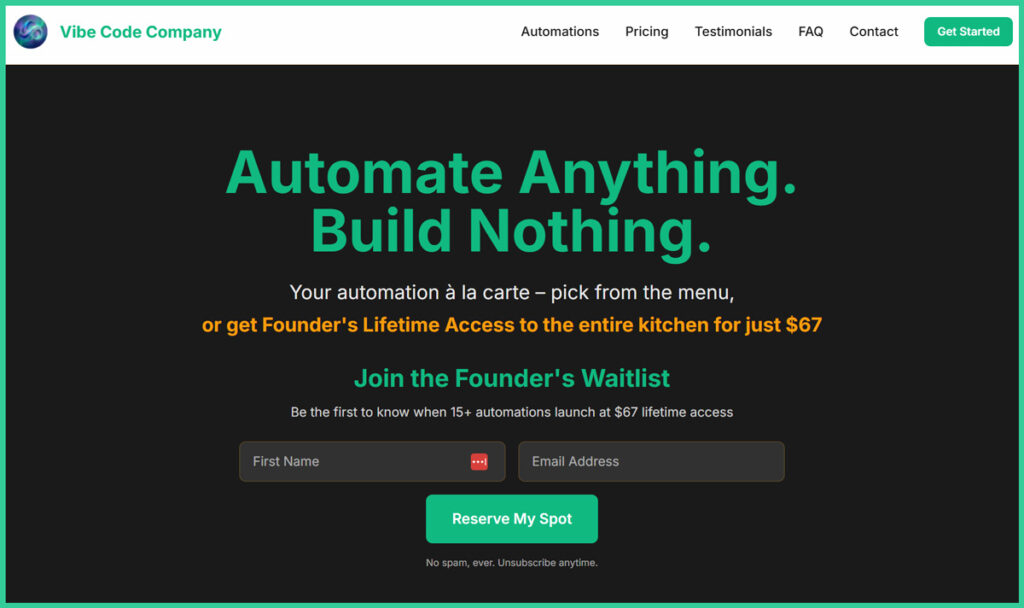Guide to four actionable strategies that agencies can implement to become thought leaders in their space:
Page Contents
- Guide to four actionable strategies that agencies can implement to become thought leaders in their space:
- The Power of Thought Leadership: Building Your Brand Through Interviews and Media Engagements
- Crafting a Clear and Compelling Message: The Power of Innovative Solutions
- Crafting a Clear and Compelling Message: The Power of Defining Your Unique Value Proposition
- Developing Forward-Thinking Pitches: The Key to Positioning Subject Matter Experts
- Questions & Answers:
- Build thought leadership through interviews and media engagements: In order to establish yourself as a thought leader in your industry, you need to reach your target audience. This is where the media can help amplify your message as well as your brand. From traditional channels like newspapers, magazines, and morning TV shows to growing mediums like podcasts, there are many avenues to explore[1].
- Cultivate innovative solutions: This particular strategy consists of cultivating innovative solutions that both inspire and inform potential customers. Through creative, valuable, and informative content, you can establish yourself as an expert in your field[2].
- Define your distinct place within your industry: At AKCG, they work with you to define — or refine — your distinct place within your industry. From there, they build a program to amplify your position among your most important stakeholders. When you want your organization better defined, better positioned, or better differentiated, a thought leadership program may be the key[4].
- Develop forward-thinking pitches to position subject matter experts: The components of a thought leadership program will vary depending on the organization’s goals, but generally include developing forward-thinking pitches to position subject matter experts within the industry[4].
For More, Please Read The Expanded Summaries Below:
The Power of Thought Leadership: Building Your Brand Through Interviews and Media Engagements
In today’s fast-paced and ever-changing business landscape, it’s more important than ever to establish yourself as a thought leader in your industry. By doing so, you can build trust and recognition as an intelligent, experienced, and helpful leader within your space. One of the most effective ways to achieve this is through interviews and media engagements.
Why Interviews and Media Engagements Matter
Interviews and media engagements are powerful tools for building thought leadership because they allow you to reach your target audience in a way that is both authentic and engaging. By sharing your insights, experiences, and perspectives with the media, you can establish yourself as an expert in your field and build trust and credibility with your audience.
In addition, interviews and media engagements can help you:
- Increase your visibility and reach: By appearing in the media, you can reach a wider audience than you would through your own channels.
- Build your brand: By sharing your unique insights and perspectives, you can differentiate yourself from your competitors and build a distinctive brand.
- Establish relationships with journalists and influencers: By building relationships with journalists and influencers, you can increase your chances of being featured in future stories and gain access to new opportunities.
How to Build Thought Leadership Through Interviews and Media Engagements
Here are some actionable strategies for building thought leadership through interviews and media engagements:
- Identify your target audience: Before you start reaching out to the media, it’s important to identify your target audience. Who are you trying to reach? What are their interests and pain points? By understanding your target audience, you can tailor your messaging and outreach efforts to better resonate with them.
- Develop a clear and compelling message: Once you’ve identified your target audience, it’s important to develop a clear and compelling message that speaks to their needs and interests. What unique insights and perspectives can you offer? What value can you bring to the conversation? By developing a clear and compelling message, you can differentiate yourself from your competitors and establish yourself as a thought leader in your industry.
- Build relationships with journalists and influencers: In order to get featured in the media, you need to build relationships with journalists and influencers. This involves reaching out to them, introducing yourself and your brand, and offering to provide insights and perspectives on topics that are relevant to their audience. By building relationships with journalists and influencers, you can increase your chances of being featured in future stories and gain access to new opportunities.
- Be prepared and professional: When you do get the opportunity to be featured in the media, it’s important to be prepared and professional. This means doing your research, understanding the outlet and audience you’re speaking to, and being able to articulate your message clearly and concisely. By being prepared and professional, you can make a positive impression on the media and establish yourself as a credible and trustworthy thought leader in your industry.
Summary
Building thought leadership through interviews and media engagements is a powerful way to establish yourself as an expert in your field and build trust and recognition as an intelligent, experienced, and helpful leader within your space. By identifying your target audience, developing a clear and compelling message, building relationships with journalists and influencers, and being prepared and professional, you can increase your visibility, build your brand, and establish yourself as a thought leader in your industry.
Crafting a Clear and Compelling Message: The Power of Innovative Solutions
Solutions
In today’s competitive business landscape, it’s not enough to simply offer a product or service. To stand out from the crowd and establish yourself as a thought leader in your industry, you need to offer innovative solutions that both inspire and inform potential customers. By doing so, you can establish yourself as an expert in your field and build trust and recognition as an intelligent, experienced, and helpful leader within your space.
Why Innovative Solutions Matter
Innovative solutions are powerful tools for building thought leadership because they allow you to differentiate yourself from your competitors and offer unique value to your customers. By developing innovative solutions that solve real-world problems and address unmet needs, you can establish yourself as a thought leader in your industry and build a distinctive and customer-centric brand.
In addition, innovative solutions can help you:
- Increase your market share: By offering innovative solutions, you can attract new customers and increase your market share.
- Build customer loyalty: By providing unique value to your customers, you can build strong relationships and foster customer loyalty.
- Drive revenue growth: By offering innovative solutions, you can create new revenue streams and drive revenue growth for your business.
How to Develop Innovative Solutions
Here are some actionable strategies for developing innovative solutions:
- Identify unmet needs and pain points: The first step in developing innovative solutions is to identify unmet needs and pain points in your target market. What problems are your customers facing? What challenges are they struggling to overcome? By understanding your customers’ needs and pain points, you can develop solutions that address their most pressing concerns.
- Brainstorm creative and valuable solutions: Once you’ve identified unmet needs and pain points, it’s time to brainstorm creative and valuable solutions. This involves thinking outside the box and exploring new ideas and approaches. By developing solutions that are both innovative and valuable, you can differentiate yourself from your competitors and establish yourself as a thought leader in your industry.
- Test and refine your solutions: Once you’ve developed your solutions, it’s important to test and refine them. This involves gathering feedback from your customers and making adjustments based on their input. By testing and refining your solutions, you can ensure that they meet the needs of your customers and provide real value to your target market.
- Communicate your solutions effectively: Once you’ve developed and refined your solutions, it’s important to communicate them effectively to your target audience. This involves crafting a clear and compelling message that speaks to the needs and interests of your customers. By communicating your solutions effectively, you can establish yourself as an expert in your field and build trust and recognition as a thought leader in your industry.
Summary
Innovative solutions are a powerful tool for building thought leadership and establishing yourself as an expert in your field. By identifying unmet needs and pain points, brainstorming creative and valuable solutions, testing and refining your solutions, and communicating your solutions effectively, you can differentiate yourself from your competitors and build a distinctive and customer-centric brand. So why not start developing innovative solutions today?
Crafting a Clear and Compelling Message: The Power of Defining Your Unique Value Proposition
To establish yourself as a thought leader in your industry, it’s important to define your unique value proposition. This involves identifying what sets you apart from your competitors and what value you bring to your customers. By understanding your target market, studying the competitor landscape, and analyzing customer feedback, you can craft a brand position that stands out and deeply resonates with your audience.
Why Defining Your Unique Value Proposition Matters
Defining your unique value proposition is a critical step in building thought leadership because it allows you to differentiate yourself from your competitors and establish a distinctive and customer-centric brand. By defining your unique value proposition, you can:
- Attract new customers: By communicating your unique value proposition, you can attract new customers who are looking for the specific benefits and solutions that you offer.
- Build customer loyalty: By consistently delivering on your unique value proposition, you can build strong relationships with your customers and foster customer loyalty.
- Increase your market share: By establishing a distinctive and customer-centric brand, you can increase your market share and outcompete your rivals.
How to Define Your Unique Value Proposition
Here are some actionable strategies for defining your unique value proposition:
- Identify your target market: The first step in defining your unique value proposition is to identify your target market. Who are you trying to reach? What are their needs and pain points? By understanding your target market, you can tailor your messaging and positioning to better resonate with them.
- Study the competitor landscape: Once you’ve identified your target market, it’s important to study the competitor landscape. Who are your competitors? What are their strengths and weaknesses? By understanding your competitors, you can identify gaps in the market and opportunities to differentiate yourself.
- Analyze customer feedback: In addition to studying the competitor landscape, it’s important to analyze customer feedback. What do your customers like about your product or service? What do they wish you would improve? By listening to your customers, you can identify areas where you can add value and differentiate yourself from your competitors.
- Craft a clear and compelling message: Once you’ve identified your unique value proposition, it’s important to craft a clear and compelling message that communicates your value to your target market. This involves developing messaging that is both authentic and resonant with your audience. By communicating your unique value proposition effectively, you can establish yourself as a thought leader in your industry and build a distinctive and customer-centric brand.
Summary
Defining your unique value proposition is a critical step in building thought leadership and establishing a distinctive and customer-centric brand. By identifying your target market, studying the competitor landscape, analyzing customer feedback, and crafting a clear and compelling message, you can differentiate yourself from your competitors and attract new customers, build customer loyalty, and increase your market share. So why not start defining your unique value proposition today?
Developing Forward-Thinking Pitches: The Key to Positioning Subject Matter Experts
To establish yourself as a thought leader in your industry, it’s important to position your subject matter experts as experts in their respective fields. By doing so, you can build trust and recognition as an intelligent, experienced, and helpful leader within your space. One of the most effective ways to achieve this is through developing forward-thinking pitches.
Why Developing Forward-Thinking Pitches Matters
Developing forward-thinking pitches is a critical step in building thought leadership because it allows you to position your subject matter experts as experts in their respective fields. By developing pitches that are both innovative and valuable, you can differentiate yourself from your competitors and establish yourself as a thought leader in your industry.
In addition, developing forward-thinking pitches can help you:
- Attract new customers: By positioning your subject matter experts as experts in their respective fields, you can attract new customers who are looking for the specific benefits and solutions that you offer.
- Build customer loyalty: By consistently delivering on your forward-thinking pitches, you can build strong relationships with your customers and foster customer loyalty.
- Increase your market share: By establishing a distinctive and customer-centric brand, you can increase your market share and outcompete your rivals.
How to Develop Forward-Thinking Pitches
Here are some actionable strategies for developing forward-thinking pitches:
- Identify your target audience: The first step in developing forward-thinking pitches is to identify your target audience. Who are you trying to reach? What are their needs and pain points? By understanding your target audience, you can tailor your messaging and positioning to better resonate with them.
- Study the industry landscape: Once you’ve identified your target audience, it’s important to study the industry landscape. What are the latest trends and developments in your industry? What are your competitors doing? By understanding the industry landscape, you can identify gaps in the market and opportunities to differentiate yourself.
- Brainstorm innovative and valuable ideas: Once you’ve studied the industry landscape, it’s time to brainstorm innovative and valuable ideas. This involves thinking outside the box and exploring new ideas and approaches. By developing pitches that are both innovative and valuable, you can differentiate yourself from your competitors and establish yourself as a thought leader in your industry.
- Craft a clear and compelling message: Once you’ve developed your forward-thinking pitches, it’s important to craft a clear and compelling message that speaks to the needs and interests of your target audience. This involves developing messaging that is both authentic and resonant with your audience. By communicating your forward-thinking pitches effectively, you can establish yourself as an expert in your field and build trust and recognition as a thought leader in your industry.
Summary
Developing forward-thinking pitches is a critical step in building thought leadership and establishing a distinctive and customer-centric brand. By identifying your target audience, studying the industry landscape, brainstorming innovative and valuable ideas, and crafting a clear and compelling message, you can differentiate yourself from your competitors and attract new customers, build customer loyalty, and increase your market share. So why not start developing forward-thinking pitches today?
Questions & Answers:
How can you develop a thought leadership roadmap?
To develop a thought leadership roadmap, you can score potential topics based on their relevance, uniqueness, and potential impact. Then, focus on the topics that score the highest and start updating yourself on them by reading the latest articles and books, building projects, and attending webinars, keynotes, or classes on the various subjects.
What are some content ideas for building thought leadership?
Some content ideas for building thought leadership include creating articles that outline your point of view on major topics in your industry, keeping readers updated on the latest news and developments in the industry, and providing exclusive resources for your audience to engage with. You can also develop a strategic, authentic message for a targeted audience and create and share thought leadership content that truly serves them in a meaningful way.
What are some strategies for becoming a thought leader in your industry?
Some strategies for becoming a thought leader in your industry include developing a solid thought leadership strategy that focuses on who you are going to serve and how you are going to serve them, creating original content that establishes you as an expert in your field, and building a following by delivering up-to-date and relevant content to your audience. You can also prioritize the infinite number of tactics that you can and should invest in and focus on quality and consistency.
What are some benefits of becoming a thought leader?
Some benefits of becoming a thought leader include fostering trust and credibility with customers, becoming a go-to voice in your industry, and opening up amazing opportunities. Thought leadership can also give you a tremendous competitive advantage in your career, your team, or your organization. It can democratize and spread your ideas without the need for a massive ad budget.
Citations: [1] https://ghidotti.com/blog/4-strategies-to-elevate-your-thought-leadership/ [2] https://goodmanlantern.com/content-writing-services/thought-leadership-service/ [3] https://topagency.com/thought-leadership/ [4] https://akcg.com/thought-leadership/ [5] https://audienceaudit.com/agency-thought-leadership/ [6] https://www.kaplow.com/service/executive-thought-leadership/



